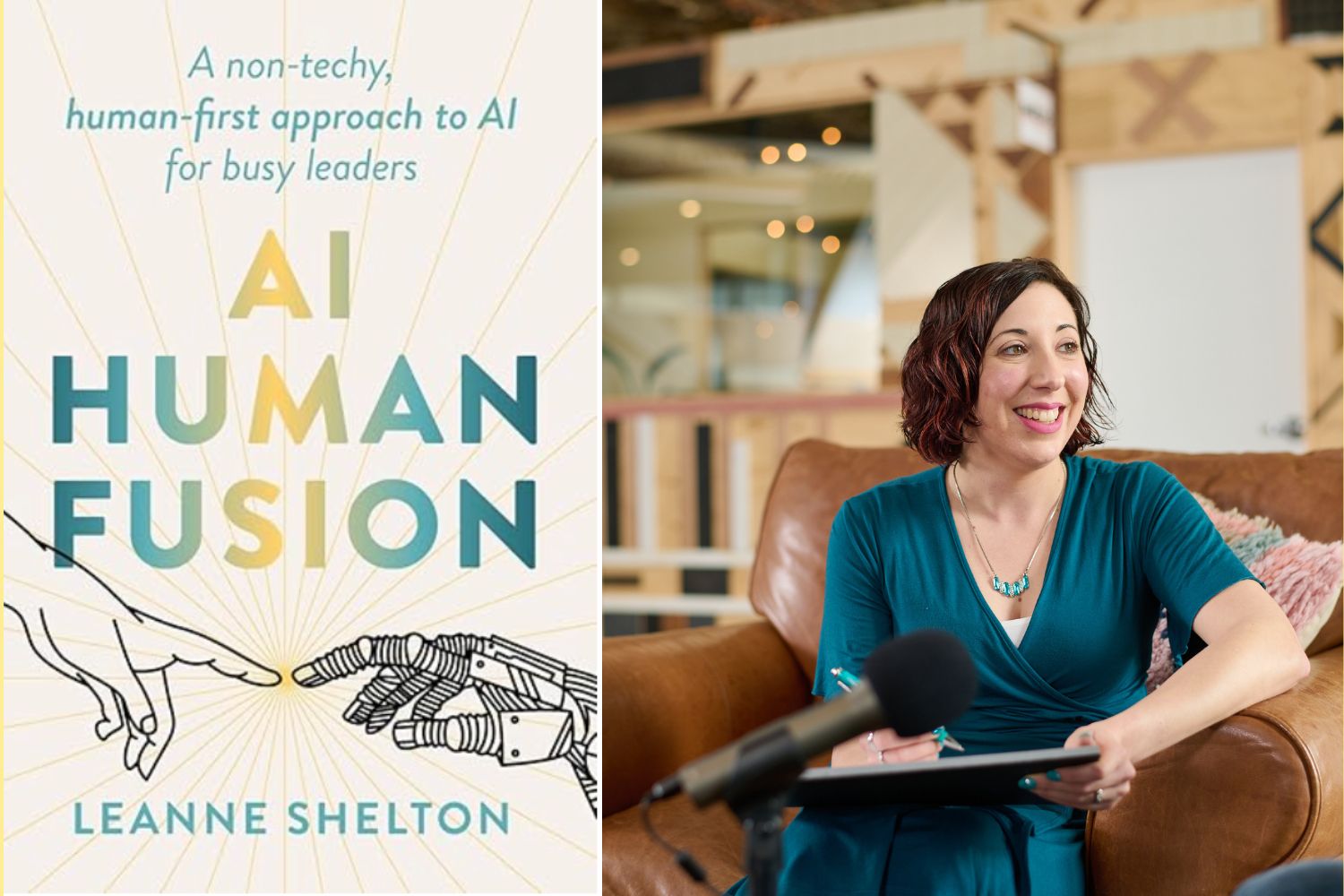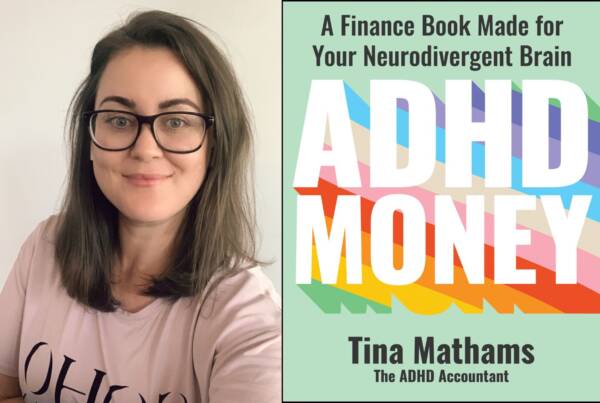Words by Leanne Shelton
 When people find out I’m an “AI expert” they usually assume I spend my entire day talking to machines, testing dozens of tools, and trying to automate every part of my business and life.
When people find out I’m an “AI expert” they usually assume I spend my entire day talking to machines, testing dozens of tools, and trying to automate every part of my business and life.
But that’s actually not true. At least not for me.
Even though I’m a keynote speaker and trainer in the AI space today, up until two years ago I worked in content marketing. So this stuff is still fairly new to me – and I’m still getting used to calling myself a “woman in tech”.
Ultimately, I see myself as a passionate advocate for keeping things human – and it’s one of the core reasons why I wrote my book ‘AI-Human Fusion’. So while I help teams and leaders confidently explore and implement AI each week, my own day isn’t completely fuelled by constant tech. I don’t use every tool under the sun. I’m not obsessed with the latest plugins or productivity hacks. (In fact, I mostly avoid updates to eliminate overwhelm.) And I certainly don’t believe AI should take over my creativity or decision-making.
I strongly believe AI is here to enhance us, not replace us – and I practice what I preach. Sure, AI helps me overcome procrastination, spark ideas, and streamline the odd task. But I see it as just one part of a much bigger, human-led process – with my decades of copywriting and marketing skills shining through.
Curious what a real day with AI looks like, without the hype or hustle? Well, here’s a glimpse into how I use it, when I don’t, and why thoughtful, limited use works best for me.
Morning mindset: LinkedIn without the cringe
It’s 10am and I’m doing a quick Google search to find an old article link – when I stumble across something completely unexpected.
An article I wrote and submitted to my PR consultant yesterday has already gone live. Not just live, but published on a well-known media platform – and it was uploaded two hours ago.
Cue excitement… followed immediately by that familiar voice in my head:
Do I post about this?
Does it look like I’m showing off?
Am I becoming one of those people on LinkedIn?
This is the part where ChatGPT becomes my sounding board. I tell it the facts: “My article has been featured in Forbes Australia and I want to share it on LinkedIn without sounding like a wanker and celebrating myself too much. Even though it’s one of the publications I’ve always wanted to appear in. How should I word the post??”
It gives me a starting point, but it feels a bit off. So I supply a link to the article for context and it drafts me another. Then I create a post which branches off from the two AI-generated versions.
The end result? A post that feels proud and grounded. It celebrates my win, but it’s not about ego – it’s about highlighting my thought-leadership musings that could potentially help thousands across the globe. It’s so easy to overthink these moments. AI is great for helping me find the words when I’m second-guessing myself and take the pressure off. So I can get back to the important tasks.
(By the way, for full transparency, I acknowledge ChatGPT’s involvement at the bottom of the post.)
Mid-morning mood: Co-writing time with ChatGPT
It’s now 11:30am and I’m sitting at my desk with a jasmine green tea. I’ve woken my brain up by (manually) replying to emails and hanging out on LinkedIn. Now it’s time for some focused time for content creation. The task? This very article.
I start the way I usually do – by giving ChatGPT a link to the publication website so it understands the context and audience. Then I provide a rough idea of what I want to say. Lately, I’ve started using voice prompting more – because sometimes it’s easier to say my thoughts out aloud, rather than type them out. Through these ramblings, I often gain more clarity. And the AI transcription is surprisingly good.
Like clockwork, I have a starting draft within seconds. But here’s the important part – I don’t just copy, paste, and move on.
Instead, I follow the exact process I teach in my training sessions. I continually review the tone. Rewrite awkward phrases. Reorganise paragraphs. Add anecdotes. And strip out anything that’s unnecessary or doesn’t sound like me. By the time I finish this article, I’d have rewritten about 60–70% of the original AI-generated draft. But ChatGPT also knows my brand voice. So it delivers a fairly decent first-go attempt.
That’s the magic of using AI with intention. It breaks the blank page. It gives me momentum. It removes the friction so I can start – which is often the hardest part. And once I’m in flow, the ideas keep coming. That first spark from ChatGPT leads to a much richer, more human result.
Afternoon fuel: Shaping keynote benefits
It’s after lunch and I’m shifting from writing to strategy mode. Next on the list: fleshing out my keynote speaker kit.
I’ve delivered dozens of talks across Australia and South-East Asia, but I don’t yet have a clear summary of the benefits and outcomes for each topic. That changes today.
Rather than digging through old notes line by line, I turn to ChatGPT. I upload two sample kits from friends and relevant chapters from my book. I also suggest a structure for the session outlines. Then ask for an outline.
The response is amazing – and honestly, it relieves so much pressure from my human brain. I’ve been procrastinating about this task for weeks. (Actually months…) It’s also quite validating by helping me zoom out – and describe what I do and the value I bring with more clarity and confidence.
Of course, I don’t stop at this first draft. I tweak the phrasing, reorganise the points, and add the warmth and energy that make it mine.
AI’s in my day – but it’s not running the show
As you’ve probably noticed, AI shows up in my day – but it doesn’t run it. It’s a helpful assistant, not the creative lead. While it might kick things off, it’s nothing without my strategy, edits, and voice. That’s the part I never want to hand over.
So if you’re dabbling in AI or just curious – start small. Use it where it helps, ignore it where it doesn’t, and always keep yourself in the driver’s seat.
Because the real magic still comes from you.






